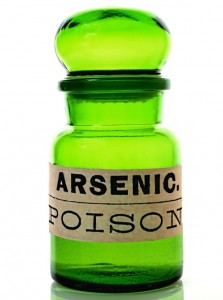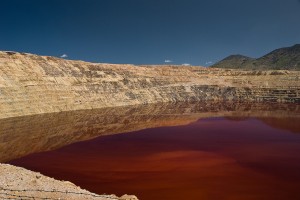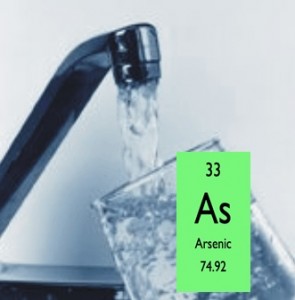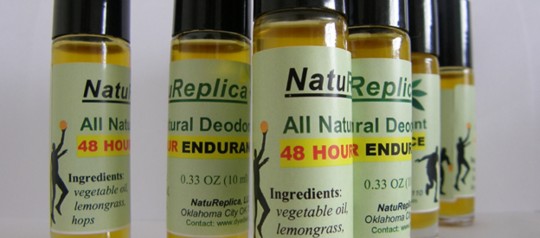Arsenic: What you should know
According to the Wikipedia, arsenic is a chemical element that occurs in many minerals, usually in conjunction with sulfur and metals, and also as a pure elemental crystal. It was first documented by Albertus Magnus in 1250.
The main use of metallic arsenic is for strengthening alloys of copper and especially lead (for example, in car batteries). Arsenic is a common n-type dopant in semiconductor electronic devices, and the optoelectronic compound gallium arsenide is the most common semiconductor in use after doped silicon.
Arsenic poisoning
Arsenic is notoriously poisonous to multicellular life, although arsenic and selenium are readily metabolized by prokaryotes, participating in a full range of metabolic functions including assimilation, methylation, detoxification, and anaerobic respiration. In the past arsenic trioxide and some arsenic compounds were used in production of pesticides. Copper arsenates are used on a large scale as wood preservatives in the US and Malaysia, but such materials are banned in many parts of the world. Arsenic trioxide is readily absorbed by the digestive system: toxic effects are also well known upon inhalation or upon skin contact.
Arsenic poisoning is a medical condition caused by elevated levels of arsenic in the body. In general, the highest risk of arsenic poisoning comes with groundwater which may naturally high concentrations of arsenic. A 2007 study found that over 137 million people in more than 70 countries are probably affected by arsenic poisoning from drinking water. Groundwater makes up about twenty percent of the world’s fresh water supply, which is about 0.61% of the entire world’s water, including oceans and permanent ice.
The first symptoms of acute arsenic poisoning by ingestion are digestive problems: vomiting, abdominal pains, diarrhea often accompanied by bleeding. Sub-lethal doses can lead to convulsions, cardiovascular problems, inflammation of the liver and kidneys and abnormalities in the coagulation of the blood.
Recent new report has ruled out arsenic poisoning as the reason for Napoleon’s death: Italian researchers conducted a detailed analysis of hairs taken from Napoleon’s head at four times in his life — as a boy in Corsica, during his exile on the island of Elba, the day he died on St. Helena, at age 51, and the day afterward — and discovered that the arsenic levels underwent no significant rises.
Arsenic in drinking water
Chronic arsenic poisoning is known as arsenicosis. This disorder affects workers in smelters, in populations whose drinking water contains high levels of arsenic (0.3–0.4 ppm), and in patients treated for long periods with arsenic-based pharmaceuticals. Similarly, studies on workers exposed in copper foundries in the U.S., Japan and Sweden indicate a risk of lung cancer 6–10 times higher for the most exposed workers compared with the general population. Long-term ingestion of arsenic trioxide either in drinking water or as a medical treatment can lead to skin cancer. Reproductive problems (high incidence of miscarriage, low birth weight, congenital deformations) have also been indicated in one study of women exposed to arsenic trioxide dust as employees or neighbors of a copper foundry.
Ecology: Berkeley Pit in Montana
The Anaconda Copper mine was opened in 1955 and operated later by the Atlantic Richfield Company (ARCO), until its closure in 1982. Ultimately, about 1,000,000,000 tons of material was mined from the Berkeley Pit. Copper was the principal metal produced, although other metals were also extracted, including silver and gold. Its location has been consumed by the Berkeley Pit, a vast open-pit mine. As a result, the pit is laden with heavy metals and dangerous chemicals that leach from the rock, including arsenic, cadmium, zinc, and sulfuric acid. (It is one mile long by half a mile wide with an approximate depth of 1,780 feet (540 m). It is filled to a depth of about 900 feet (270 m) with water that is heavily acidic). The pit and its water present a serious environmental problem because the water, with dissolved oxygen, allows pyrite and sulfide minerals in the ore and wall rocks to decay, releasing acid. When the pit water level eventually reaches the natural water table, estimated to occur by around 2020, the pit water will reverse flow back into surrounding groundwater, polluting into Silver Bow Creek which is the headwaters of Clark Fork River.
In 1995, a flock of migrating snow geese landed in the Berkeley Pit water and died. A total of 342 carcasses were recovered. Necropsies showed their insides were lined with burns and festering sores from exposure to high concentrations of copper, cadmium, and arsenic.
Recent report indicates that massive Superfund cleanup of Butte is not working to protect human health and the environment. The states that mortality rates from the types of cancer associated with metals exposure are higher in Butte than the state of Montana’s and the United States as a whole and that these rates have remained high and even increased after Superfund remediation. The report concludes that “living in the Butte landscape leads to higher mortality rates for all diseases.” See general cancer inforgaphics Gallery here.
Curiously, new fungal and bacterial species have been found to have accommodated in the harsh conditions in the pit. A few organic compounds were isolated from these organisms and shown selective activity against cancer cells.
Biological role of arsenic
Some species of bacteria obtain their energy by oxidizing various fuels while reducing arsenate to arsenite. Under oxidative environmental conditions some bacteria use arsenite, which is oxidized to arsenate as fuel for their metabolism. The enzymes involved are known as arsenate reductases.
Arsenic has been linked to epigenetic changes, heritable changes in gene expression that occur without changes in DNA sequence. These include DNA methylation, histone modification, and RNA interference. Toxic levels of arsenic cause significant DNA hypermethylation of tumor suppressor genes p16 and p53, thus increasing risk of carcinogenesis.
Inorganic arsenic and its compounds, upon entering the food chain, are progressively metabolized through a process of methylation. The organic compound arsenobetaine is found in some marine foods such as fish and algae, and also in mushrooms in larger concentrations. The average person’s intake is about 10–50 µg/day. Values about 1000 µg are not unusual following consumption of fish or mushrooms, but there is little danger in eating fish because this arsenic compound is relatively non-toxic.
Category: Food and Risk, Healthy diet, Uncategorized










Can you tell us about the arsenic ‘created’ when you eat bitter almonds? I know they say too much ingestion can kill you.
Thanks for your info.
SORRY, Never mind! …that’s cyanide in bitter almonds, not arsenic!
Was actually wondering about the nutritional benefit derived from bitter almonds if you were to heat them to neutralize the poisonous cyanide affect. Have a great day…
Yes, looks like you have answered the question! It is Amygdalin glycoside that brings cyanide: http://en.wikipedia.org/wiki/Amygdalin